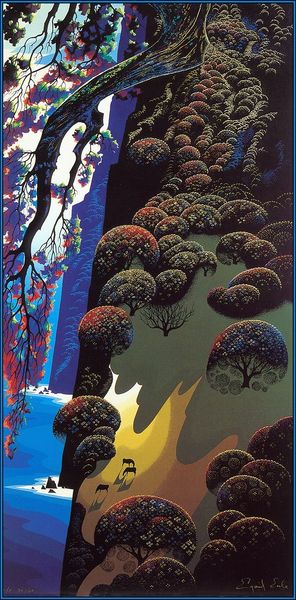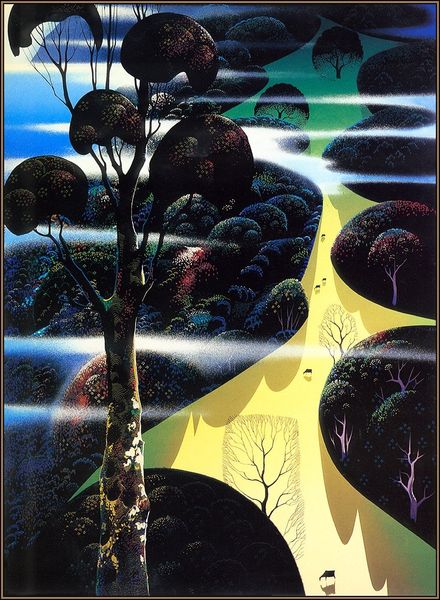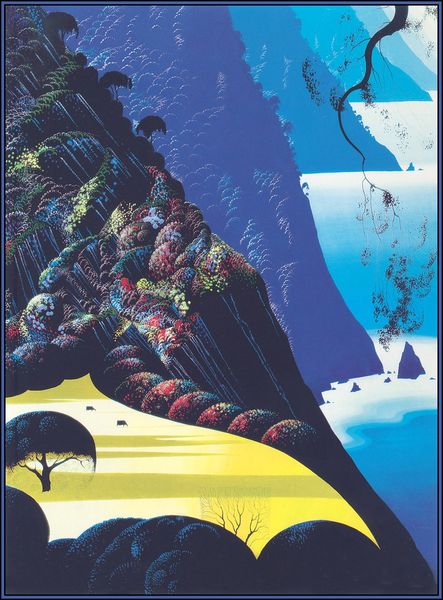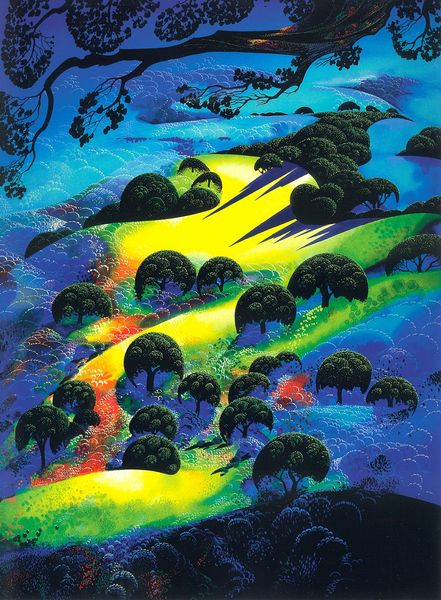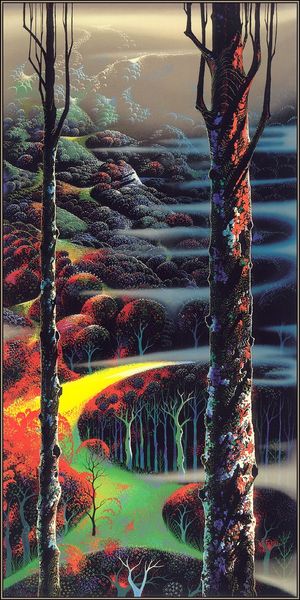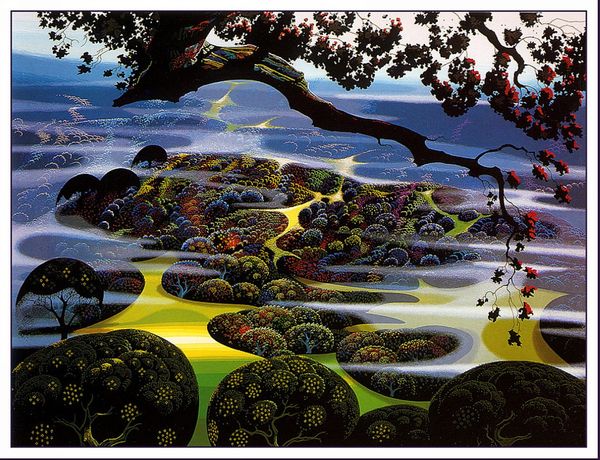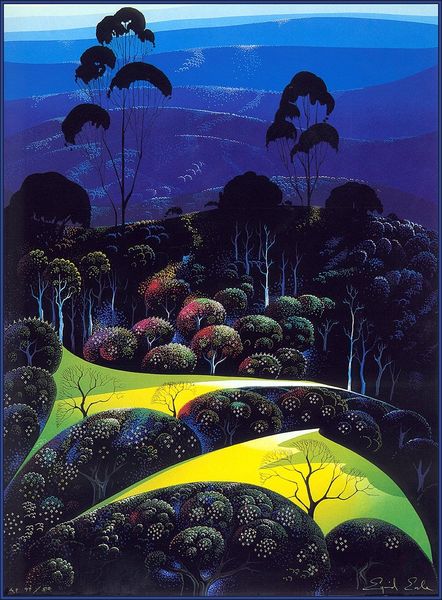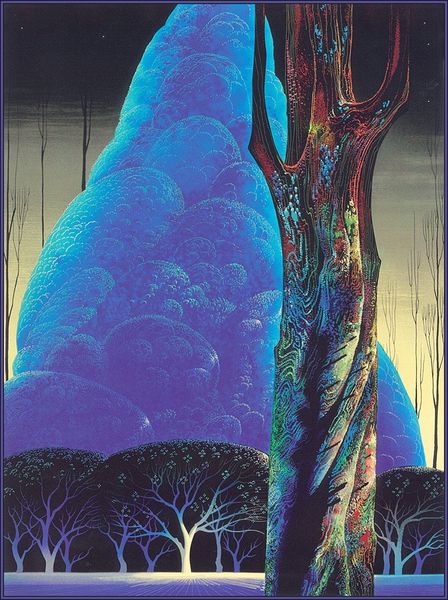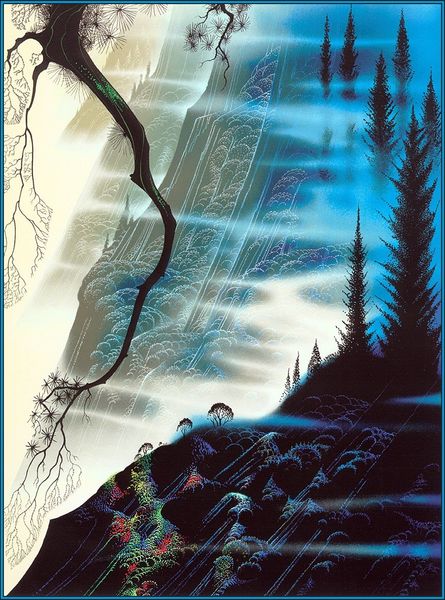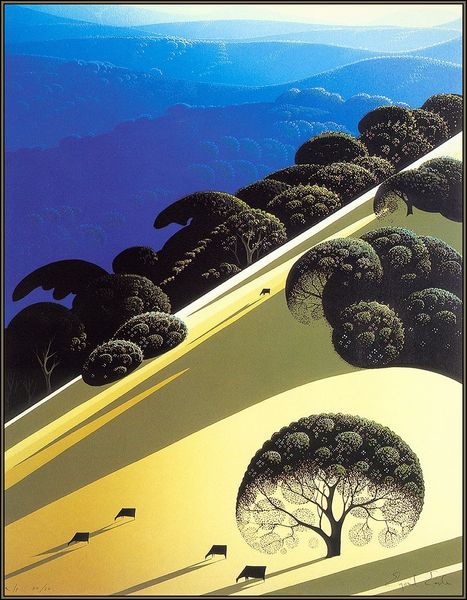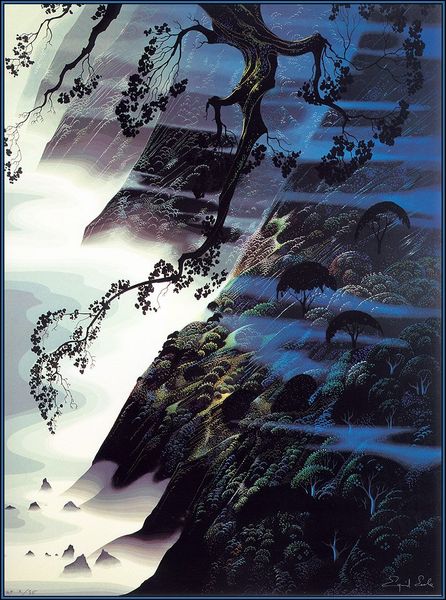
painting, acrylic-paint
#
painting
#
landscape
#
acrylic-paint
#
geometric
#
naive art
#
abstract art
#
realism
Copyright: Eyvind Earle,Fair Use
Editor: Right, let’s talk about Eyvind Earle’s “Three Pastures on a Hillside,” painted in 1999 using acrylic. There’s something almost dreamlike about its landscape—rigidly geometric but still somehow inviting. What’s your take on it? Curator: The fascinating element here is Earle’s conscious engagement with both the traditions of landscape painting and a distinctly modern visual language. We must consider the public role of landscape art, traditionally a marker of national identity and idealized nature. But Earle's approach seems to almost subvert this; what could it tell us about the role of the idyllic in the late 20th century? Editor: Subvert? How so? Curator: By taking elements of realism, yes, but abstracting them so heavily, he pushes the landscape beyond the merely representational. It’s hyper-real, even naive. Think of it in terms of the burgeoning environmental movement. Is he prompting us to reflect on our idealization, perhaps even exploitation, of nature? Look how perfectly ordered the foliage appears; is that nature, or is that a designed landscape? Editor: That's interesting – it didn’t strike me that way initially, but the almost stylized, repetitive shapes of the trees now feel... manufactured. Like a carefully manicured park instead of untamed wilderness. Curator: Exactly! This invites us to question how concepts of 'nature' and its depiction shift through cultural and political lenses. Earle wasn't just painting a scene; he was participating in a long conversation about how we perceive and interact with our environment. Editor: So it’s not *just* a pretty landscape. I hadn't considered how those politics of imagery shape the meaning! Thank you. Curator: Precisely! And seeing it through this perspective offers new ways of engaging with the piece and, arguably, with the landscapes around us too.
Comments
No comments
Be the first to comment and join the conversation on the ultimate creative platform.
